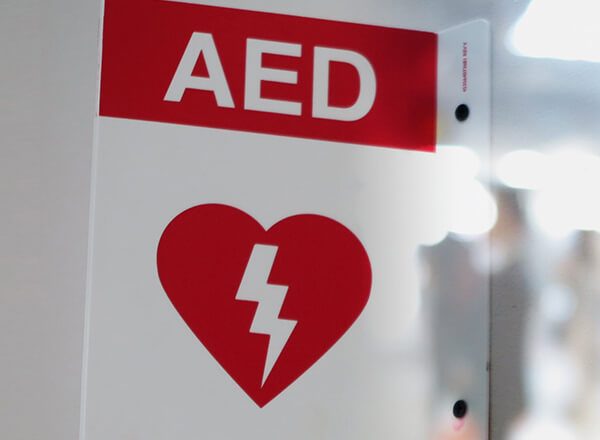Since 2007, the first week of June has been recognized as National CPR and AED Awareness Week. The American Heart Association® (AHA) uses this time to ensure Americans know how to perform CPR and use an automated external defibrillator (AED). These skills are proven to save lives from sudden cardiac arrest.
Early intervention also improves outcomes like long-term effects from sudden cardiac arrest. Current CPR statistics paint a difficult picture, but the public and health professionals who learn and leverage these skills can create change. Throughout the week-long observance and year-round, the AHA encourages people to learn CPR and how to react in an emergency, offering resources for employers, community organizations and healthcare professionals to share and empower bystanders.
The Importance of Bystander Response
Most sudden cardiac arrests outside the hospital happen at home, which means many people would need CPR from a loved one. However, the AHA reports that only about 30% of people receive immediate help. Survival rates of people who experience an out-of-hospital sudden cardiac arrest are low, with approximately 10% living until hospital discharge. Yet when a bystander steps in to perform CPR, a person's chance of survival can double or even triple.
Rapid defibrillation further improves a person's chance of survival. Chances decrease by 10% for every minute they spend in ventricular fibrillation (VF). Rapid defibrillation, which treats VF to reestablish a normal heart rhythm, is the third link in the chain of survival from cardiac arrest and an additional skill for bystanders to know.
These CPR statistics underscore the importance of CPR and AED Awareness Week and the AHA's push to teach these skills to as many people as possible.
How to Step In and Be a Lifesaver
When bystanders step in to perform CPR and use an AED, they buy the person precious time until first responders arrive and can provide medical help and transportation to a hospital. The AHA continues to make it easier for people to learn basic CPR skills.
Hands-only CPR takes just two steps: Call 911 and push hard and fast in the center of the chest.
Give chest compressions at a rate of 100 to 120 compressions per minute. The AHA shares popular songs with that beat, including "Stayin' Alive" by the Bee Gees and "Crazy in Love" by Beyoncé featuring Jay-Z. The 2024 awareness week campaign features a mashup video keeping the beat. Matching the compression rate to a popular song helps people remember how to perform compressions correctly.
Resources to Raise Awareness
The AHA also offers training resources, including in-person CPR and AED Heartsaver courses and CPR Anytime Training Kits. Anyone can access this training on their own or as a group.
To raise awareness about the importance of learning these lifesaving skills, the AHA created resources for 2024, including printable materials, email templates, and social media images. Individuals, employers, community organizations and healthcare facilities can use these resources to encourage people in their communities to get trained.
Training for High-Quality CPR
In the hospital, all providers and those who could be involved in patient care should know how to perform high-quality CPR. The Resuscitation Quality Improvement (RQI) Program offers low-dose, high-frequency training for providers to keep their skills fresh.
High-quality CPR has four key components:
- 100 to 120 chest compressions per minute
- Compression depth of at least 2 inches for adults
- Appropriate patient ventilation
- High-quality compressions for at least 80% of the event
RQI offers training with simulation stations that provide real-time feedback on chest compression quality and verify competence with an eCredential. By providing quarterly skill refreshers, RQI ensures healthcare professionals are confident and ready to respond to a sudden cardiac arrest emergency.
This June, go beyond CPR awareness — improve your CPR and AED skills and encourage those around you to learn, too. More empowered bystanders can save more lives.








